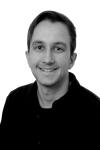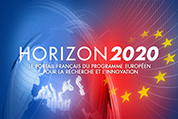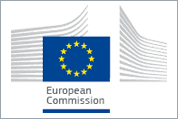ESR1.a: Patrick ELISONVelocity analysis and full-waveform inversion using data-driven focusing

Patrick ELISON: I grew up in southwest Germany, halfway between the black forest and the river Rhine. After I did a voluntary social year in South America, I studied Georessources Management at RWTH Aachen and partly in Granada, Spain. I wrote my Bachelor thesis about the ability of the soil to protect the groundwater from copper and zinc in the River Ems catchment (North Rhine-Westphalia) at Jülich Research Center. After that, I did the IDEA League Joint Master Program in Applied Geophysics at TU Delft, ETH Zürich and RWTH Aachen. My Master project was about the influence of uncertainty in thermal conductivity on thermal basin modelling, which I performed at the Institute for Applied Geophysics and Geothermal Energy in collaboration with Schlumberger. In my PhD project within WAVES at the Institute of Geophysics at ETH Zürich I investigate links between data driven focusing, exact boundary conditions and the FD injection method.
Main host institution
ETH Eidgnössische Technische Hochshule Zürich (Zürich, Switzerland)
Supervisors
Johan Robertsson, (johan.robertsson @ erdw.ethz.ch)Kees Wapenaar, (C.P.A.Wapenaar @ tudelft.nl)Fons ten Kroode (a.tenkroode @ shell.com), Marcin Dukalski (Marcin.Dukalski @ aramcooverseas.com)
Secondment institution
Objectives
Data-driven focusing allows one to retrieve the total wave field (Green’s function) originating from a virtual source in the subsurface and recorded by receivers located at the surface. The retrieved wave field includes all the internal multiples. Unlike seismic interferometry, data-driven focusing does not require a receiver at the position of the virtual source and it suffices to have sources and receivers at the acquisition surface only and to have a background velocity model. The objective of the project is to research and develop techniques that use data-driven focusing to assess and improve existing starting velocity models for reverse-time migration and full waveform inversion.
Expected results
Data-driven focusing introduces two major benefits to imaging. First, it can be used to build an image of the subsurface free of artifacts due to the presence of internal multiples in the data. Second, it allows one to redatum the data to any depth level. This last feature is particularly useful if we want to remove the effect of a complicated overburden (or complicated near-surface) from the data or to redatum the reflection response to a level closer to the target. Thus we expect benefits for existing velocity analysis techniques applied after data-driven focusing by (1) eliminating artifacts in images related to internal multiples and (2) by the velocity analysis not being affected by the complexities of the overburden and the near-surface. Other benefits may include totally new velocity analysis techniques or even totally new ways to process the seismic data.
International conferences:
- EAGE Annual Meeting in Vienna 30/05 - 2/06/2016: "Using a Marchenko-redatumed reflection response as an exact boundary condition"
- Society of Exploration Geophysicists (SEG), International Exposition and 86th Annual Meeting, Dallas, 16-21/10/2016: oral presentation on "Experimental Marchenko focusing in a variable diameter sound wave tube"
--> see all WAVES Posters & Flyers
Further information:
Also in the section
Key Facts
- Coordinated by Université Pierre et Marie Curie
- 15 participating partners
- 6 European countries and the USA
- 15 trained fellows
- Project budget: 3 227 952.96€
- Project duration: 4 years
- WAVES is a European project funded by the European Union’s Horizon 2020 research and innovation programme under the Marie Slodowska-Curie grant agreement n° 641943.
Contact
Coordinator:
Lapo Boschi (lapo.boschi @ upmc.fr)
Project Manager
Fanny Schultz (fanny.schultz @ sorbonne-universite.fr)



